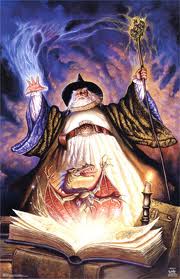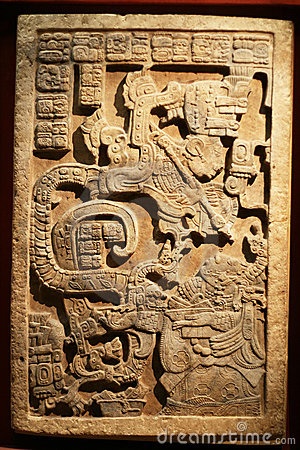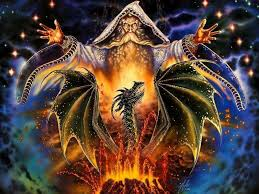It looks like you're using an Ad Blocker.
Please white-list or disable AboveTopSecret.com in your ad-blocking tool.
Thank you.
Some features of ATS will be disabled while you continue to use an ad-blocker.
share:
you dont need mercury or any special high tech to do out of body travel..
cheers
cheers
a reply to: Wifibrains
Mercury ore processing dates back to the Neolithic period, the important Vinca culture was located very close to a source, and also the Zarshuran mines of Iran, the region known to the Sumerians as Harali and related to the early activities of the Anunnaki is a source of Mercury ore.
Neolithic Mercury Processing
I agree with the article you quoted that it's symbolic usage could relate to the river of the underworld, and all points of connectivity between this world and that, the liquid mirror of transition, but also in my opinion the Apkallu that supposedly emerged from such a river find their best and earliest representation in Vinca figurines and the red of their costumes could often times be red cinnabar fired glaze.

Mercury ore processing dates back to the Neolithic period, the important Vinca culture was located very close to a source, and also the Zarshuran mines of Iran, the region known to the Sumerians as Harali and related to the early activities of the Anunnaki is a source of Mercury ore.
Red deposit (cinnabar) is evidenced on the internal side of a Neolithic pottery found on the right bank of the River Danube. This finding is related to an early processing of mercury ore.
Another important finding of the Vinča culture is the use of cinnabar, malachite and kilns suggesting the existence of well-developed technology of pigments and early copper metallurgy
This indicates that cinnabar was not used for decor but for some other purposes, preparations made in ceramic utensils. A comparison is made with the mercury ore from a Šuplja Stena mine located ~ 20 km from the Vinča village.
Neolithic Mercury Processing
I agree with the article you quoted that it's symbolic usage could relate to the river of the underworld, and all points of connectivity between this world and that, the liquid mirror of transition, but also in my opinion the Apkallu that supposedly emerged from such a river find their best and earliest representation in Vinca figurines and the red of their costumes could often times be red cinnabar fired glaze.
Dr M.Vasić claims that the inhabitants of Vinča had used the cinnabar ore as a red pigment, and processed it to get mercury. Cinnabar was found in all cultural layers of the site and it was concluded that its origin was from the mine of Šuplja Stena under mount Avala,which is some 20 km away from Vinča [1,4

edit on Kpm430118vAmerica/ChicagoWednesday2930 by Kantzveldt because: (no reason given)
a reply to: anti72
This is not really about out of body travel..though it would be very similar experience I guess... Interactive Hologram of, or portal for nebula and other beings by quantum locking... Ancestors by the looks of the mayan carvings of "vision" serpents..
This is not really about out of body travel..though it would be very similar experience I guess... Interactive Hologram of, or portal for nebula and other beings by quantum locking... Ancestors by the looks of the mayan carvings of "vision" serpents..
edit on 29-4-2015 by Wifibrains because: (no reason given)
originally posted by: MysterX
Read the Indian Vedas and the descriptions of Vimanas..or ancient aerial / flying machines.
They, according to the ancient texts were piloted flying vehicles, capable to interplanetary and atmospheric flight and were built in many configurations and sizes from single pilot small craft, right up to flying city sized (motherships).
Bull. There isn't a single ancient Indian text that says anything of the sort. What they do say, in no uncertain terms, is that they had wheels and were drawn by horses. Hell of a difference between that and interplanetary flight.
The interesting thing in regards to your OP, is that Teotihuacan with it's flat, raised platforms resembling landing pads for VTOL type craft, has long been conjectured to be a staging area for advanced flying craft in antiquity.
If by "long been conjectured" you mean since the 1970s, sure. Even then, only ignorant fools have given the idea any serious consideration.
A spaceport / airport if you will.
I won't.
The interesting thing, is that the Indian Vimana flying machines, from 1000's of years ago, were written as having a MERCURY powered propulsion system / energy system!
They absolutely were not. By all means, though, please provide a source and prove me wrong.
Mercury powered....
Not even close.
So we have Teotihuacan, and it's hypothesised spaceport landing pads, the Ancient Indian Vimanas powered by some kind of device that utilised Mercury, and now, at the theorised 'spaceport' we have found Mercury in large quantities.
It has never been theorized to be a "spaceport" by anyone but absolute idiots. Please provide a source that mercury was found in "large quantities".
This river of Mercury beneath one of the main structures at Teotihuacan...
Now it's a river of mercury? Do you just spew out whatever nonsense pops into your head as fact?
...and could have everything to do with being there as a fuel supply for landing and departing fleets of interplanetary ships in the remote past...
Yep. Apparently you do.
Just a thought.
[snipped]
originally posted by: sacredvisions
...dont think outside they box,better yet dont think at all, just accept what the mainstream tells you
I thought "outside they box"(sic) for many years, then spent many more years actually educating myself, no "mainstream" input required. You might want to try it....
edit on 4/29/2015 by AdmireTheDistance because: (no reason given)
edit on Wed Apr 29 2015 by DontTreadOnMe
because: Community Announcement re: Decorum
If this post of yours is any indication, I'd be quite surprised if you've ever had an original, intelligent thought...
It is fine to disagree and provide your argument why but this place is made for people to come and toss ideas around and you think it is ok to insult people for that? why not just agree to disagree. that statement you made says much more about you than the person it was aimed at...
It is fine to disagree and provide your argument why but this place is made for people to come and toss ideas around and you think it is ok to insult people for that? why not just agree to disagree. that statement you made says much more about you than the person it was aimed at...
a reply to: AdmireTheDistance
Thank you
Too often, people make extraordinary claims without providing any evidence, and then these claims get picked up and further propagated until they reach a critical point where every Tom, Dick and Sally spout them as if gospel.
I agree: provide sources for these claims.
I do have to laugh at the deep mistrust of 'science' by those who are ignorant (I chose that word carefully, and believe it fits).
Anyway, OP, you should write a novel. You've got some good ideas, and even though I disagree with you on your premise, you have presented it reasonably well.
Thank you
Too often, people make extraordinary claims without providing any evidence, and then these claims get picked up and further propagated until they reach a critical point where every Tom, Dick and Sally spout them as if gospel.
I agree: provide sources for these claims.
I do have to laugh at the deep mistrust of 'science' by those who are ignorant (I chose that word carefully, and believe it fits).
Anyway, OP, you should write a novel. You've got some good ideas, and even though I disagree with you on your premise, you have presented it reasonably well.
a reply to: Wifibrains
Greetings Wifi, ( if you don't mind informal name shortening )
I think you refer to animism. Obviously they did live in a world full of things, else they couldn't have left any things to be looked at.
A couple made a long pilgrimage to go to temple to watch the great "Light Show". They were astounded by what they'd seen. After they left, they stopped at the souvenir shop and inquired about miniature replicas that they may purchase to take home.
"What? No, we don't make anything like that. Just remember it until you see it again."
Upon reaching home, the man says, "I kind of remember, but it's beginning to fade."
To which the woman replies, "Oh I remember something too. Get over here."
Cue the music video you embedded:
Did the Mayans have household items similar to what was seen in the temple?
Similar to the egyptians the maya would not not live in a world full of "things"... Everything was made of spirit and given individuality purpose and personality. If the ancients were going to make technology out of their environment it would not be external something like a iphone to have and to hold, it would be something they could go within and experience.
Greetings Wifi, ( if you don't mind informal name shortening )
I think you refer to animism. Obviously they did live in a world full of things, else they couldn't have left any things to be looked at.
A couple made a long pilgrimage to go to temple to watch the great "Light Show". They were astounded by what they'd seen. After they left, they stopped at the souvenir shop and inquired about miniature replicas that they may purchase to take home.
"What? No, we don't make anything like that. Just remember it until you see it again."
Upon reaching home, the man says, "I kind of remember, but it's beginning to fade."
To which the woman replies, "Oh I remember something too. Get over here."
Cue the music video you embedded:
We light up the world
We light up the world
Oooh oooh
World
Oooh oooh
Firestone
"Firestone"
Did the Mayans have household items similar to what was seen in the temple?
edit on 29-4-2015 by pthena because: center align not
working
originally posted by: coldlikecustard
If this post of yours is any indication, I'd be quite surprised if you've ever had an original, intelligent thought...
It is fine to disagree and provide your argument why but this place is made for people to come and toss ideas around and you think it is ok to insult people for that? why not just agree to disagree. that statement you made says much more about you than the person it was aimed at...
No need to get offended. That comment was meant in a light-hearted, half-joking manner. Although in hindsight, I probably should have made that more clear. Unfortunately, I'm past the window to edit the post now...
It sure seems that ancient texts allude to tech that wasn't intended to be a component of a fictional tale from things simple as Greek fire to
weapons, sonic/gravity machines, healing, teleportation/cross dimensional communications and genetic engineering the Bible, Apocryphal, Hindu texts
etc. all discuss things like this. And most theories I have heard say a really advanced society would be so harmonious with nature that it wouldn't
leave evidence scattering the globe in tact after thousands of years. My only thought is they'd need to be born super smart or have come here already
super advanced since you'd think if not, they'd have needed to go through some phase like ours leaving lots of planetary scars and junk over a
comparable amount of time for enough minds to exist to rival our billions over 6000 yrs. Some say Venus and or Mars are the planets our predecessors
used up n bumped out to get there though. I don't hold any of these beliefs just repeating things I've heard to further discussion
So firstly we need to believe that the pyramids were a source of electrical energy, and then that the only apparent use of this electricity was to
pass through nobel gasses and mercury vapour?
Does anyone entertaining this want to apply the scientific method to this?
I doubt it, because there is zero evidence that pyramids are/were a source of electrical energy, the rest of the OP's theory depends on that part to be true for the rest to work.
So where is the tangible evidence for this?
What's the mechanics of it?
Why don't the pyramids generate electrical energy today?
Just a few questions off the top of my head..
Does anyone entertaining this want to apply the scientific method to this?
I doubt it, because there is zero evidence that pyramids are/were a source of electrical energy, the rest of the OP's theory depends on that part to be true for the rest to work.
So where is the tangible evidence for this?
What's the mechanics of it?
Why don't the pyramids generate electrical energy today?
Just a few questions off the top of my head..
originally posted by: Chadwickus
Why don't the pyramids generate electrical energy today?
Obviously, it's because we aren't holding our mouths right.
Harte
originally posted by: AdmireTheDistance
Why is it that so many people are so eager to believe this nonsense? Is it because they find actual history/archaeology/anthropology too boring? Have they seen one too many episodes of Ancient Aliens, and can no longer seperate the lies of Von Daniken, Tsoukalos, Childress, et al. from reality? Are they so dissatisfied with their own mundane lives that they cling to and live vicariously through whatever exciting, romantic fiction they can find? SNIP Why do the mods allow such blatantly fictional and nonsensical threads to remain in this forum? These are the questions that keep me up at night....
Just a guess but maybe because you frequent a CONSPIRACY website, hence the name Above Top Secret. You seem pretty knowledgable and rational, however, you seem to be bent out of shape (often) because people use their imaginations and creativity to consider the what ifs regarding our ancients.
I mean come on bro, this isn't MIT's finest here. Even so, we would never advance as a species if we weren't always questioning the status quo.
a reply to: Kantzveldt
The use of cinnabar as a red pigment (vermillion) dates back a very long time indeed.
However, without finding actual mercury at some ancient site, it is simply pure speculation that any ancient culture as old as the Vinca obtained mercury from cinnabar, although they certainly could have.
Harte
The use of cinnabar as a red pigment (vermillion) dates back a very long time indeed.
However, without finding actual mercury at some ancient site, it is simply pure speculation that any ancient culture as old as the Vinca obtained mercury from cinnabar, although they certainly could have.
Harte
a reply to: Chadwickus
I have been searching along the lines for mass or stress being able to create a charge of some sort, or being able to receive and amplify ambient energies, there was onr theory by a dr Joseph Farrel that suggested it as a power plant some how using the pyramid structure as a tuning fork with natural and harmonic resonances. I really dont do his theory any justice by way of explanation and I'm sure it's been discussed here on ats before and most probably discarded in the pseudo cell.
I did find this patent for the description of a contraption that might have a similar concept. Funny thing was when reading it it sounded eerily like a patent for the pyramid by its using of different spaces rather than components.
patents.justia.com...
I have been searching along the lines for mass or stress being able to create a charge of some sort, or being able to receive and amplify ambient energies, there was onr theory by a dr Joseph Farrel that suggested it as a power plant some how using the pyramid structure as a tuning fork with natural and harmonic resonances. I really dont do his theory any justice by way of explanation and I'm sure it's been discussed here on ats before and most probably discarded in the pseudo cell.
I did find this patent for the description of a contraption that might have a similar concept. Funny thing was when reading it it sounded eerily like a patent for the pyramid by its using of different spaces rather than components.
patents.justia.com...
edit on 30-4-2015 by Wifibrains because: (no reason given)
edit on 30-4-2015 by
Wifibrains because: (no reason given)
originally posted by: Wifibrains
a reply to: Harte
I thought cinnabar came from mercury. I might be mistaken though. Can not be bothered to check right now.
Here, I'll check for you, because it's pretty easy, and you are mistaken:
Mindat
geology.com
wikipedia
edit on 30-4-2015 by aorAki because: (no reason given)
a reply to: aorAki
I just checked myself and am glad I was mistaken... I found this.
This is very interesting as cinnabar pigment is also known as dragons blood.

Now the use of mercury vapour has already been proposed as being a holographic medium for spirit and carvings of vision serpents emerging from bowls are awash with ancestors emerging from the serpents...

Is the vision serpent a vapourous apparition from evaporated mercury from burning dragons blood in a bowl?

Sounding like the magic is REAL?

I just checked myself and am glad I was mistaken... I found this.
To produce liquid mercury (quicksilver), crushed cinnabar ore is roasted in rotary furnaces. Pure mercury separates from sulfur in this process and easily evaporates.
This is very interesting as cinnabar pigment is also known as dragons blood.

Now the use of mercury vapour has already been proposed as being a holographic medium for spirit and carvings of vision serpents emerging from bowls are awash with ancestors emerging from the serpents...

During a blood letting ritual participants would experience visions in which they communicated with the ancestors or gods. These visions took the form of a giant serpent "which served as a gateway to the spirit realm." The ancestor or god who was being contacted was depicted as emerging from the serpent’s mouth. The vision serpent thus came to be the method in which ancestors or Gods manifested themselves to the Maya. Thus for them, the Vision Serpent was a direct link between the spirit realm of the gods and the physical world.
Is the vision serpent a vapourous apparition from evaporated mercury from burning dragons blood in a bowl?

Quantities of liquid mercury ranging from 90 to 600 grams (3.2 to 21.2 oz) have been recovered from elite Maya tombs or ritual caches at six sites. This mercury may have been used in bowls as mirrors for divinatory purposes.
Sounding like the magic is REAL?

edit on 30-4-2015 by Wifibrains because: Art
originally posted by: Wifibrains
This is very interesting as cinnabar pigment is also known as dragons blood.
Dragon's Blood
Quoting from the wikipedia Cinnabar page:
(bolding mine)
This article is about the mineral. For the plant resin, see Dragon's blood.
originally posted by: Wifibrains
Sounding like the magic is REAL?
...or sounding like chemically-induced hallucinations, as mad as a Hatter....
originally posted by: Harte
a reply to: Kantzveldt
The use of cinnabar as a red pigment (vermillion) dates back a very long time indeed.
However, without finding actual mercury at some ancient site, it is simply pure speculation that any ancient culture as old as the Vinca obtained mercury from cinnabar, although they certainly could have.
Harte
Well, seeing as how the vinca were the first metal using culture, they mined and smelted copper ore, and they mined cinnabar i would say it is almost a certainty they were familiar with mercury.
a reply to: aorAki
I'm talking about cinnabar!
en.m.wikipedia.org...
Looking for a more dragon blood connection, but it speaks for itself symbolically. If I find it it will be worthy if another thread... Wish me luck.
Now... what might the maya have called it?...
Eta: getting close?
faoifengshui.blogspot.co.uk...
Anyone speak ancient mayan?
I'm talking about cinnabar!
en.m.wikipedia.org...
Cinnabar has been used for its color in the New World since the Olmec culture.[15] Cinnabar was used in royal burial chambers during the peak of Maya civilization, most dramatically in the Tomb of the Red Queen in Palenque (600–700 AD), where the remains of a noble woman and objects belonging to her in her sarcophagus were completely covered with bright red powder made from cinnabar.
Looking for a more dragon blood connection, but it speaks for itself symbolically. If I find it it will be worthy if another thread... Wish me luck.
Now... what might the maya have called it?...
Eta: getting close?
faoifengshui.blogspot.co.uk...
In both Mesoamerica and South America, cinnabar was an important trade item. The Mayan may have considered cinnabar to be sacred because of its red color. Red was considered to be the color of the east, and may also have symbolized blood as well as life, though there is no solid evidence for this.
The ancient Maya used cinnabar in their jewelry, set into incised decorations, as a paint pigment and as part of certain rituals such as funeral rituals and rituals involving fire. For rituals involving fire, Mayan priests would burn cinnabar to release the mercury.
Anyone speak ancient mayan?
edit on 30-4-2015 by Wifibrains because: (no reason given)
new topics
-
The mysterious death of Aileen Conway
General Chit Chat: 1 hours ago -
Half-Life 2 is 20 Years Old - its Also Free on Steam until the 18th
Video Games: 5 hours ago -
Does the Trump win mean No More Taylor Swift??
Politicians & People: 9 hours ago -
Trump-appointed judge blocks Biden administration overtime rule
Social Issues and Civil Unrest: 11 hours ago
top topics
-
Don't cry do Cryo instead
General Chit Chat: 16 hours ago, 12 flags -
Does the Trump win mean No More Taylor Swift??
Politicians & People: 9 hours ago, 12 flags -
Trump-appointed judge blocks Biden administration overtime rule
Social Issues and Civil Unrest: 11 hours ago, 8 flags -
The mysterious death of Aileen Conway
General Chit Chat: 1 hours ago, 5 flags -
Half-Life 2 is 20 Years Old - its Also Free on Steam until the 18th
Video Games: 5 hours ago, 1 flags
active topics
-
President-elect TRUMP Picks MATT GAETZ for his ATTORNEY GENERAL - High Level PANIC Ensues.
2024 Elections • 84 • : RickinVa -
The mysterious death of Aileen Conway
General Chit Chat • 2 • : xuenchen -
WATCH LIVE: US Congress hearing on UFOs, unidentified anomalous phenomena
Aliens and UFOs • 100 • : DaydreamerX -
President-Elect DONALD TRUMP's 2nd-Term Administration Takes Shape.
Political Ideology • 209 • : EyeoftheHurricane -
Tariffs all around, Except for ...
Dreams & Predictions • 29 • : KnowItAllKnowNothin -
Does the Trump win mean No More Taylor Swift??
Politicians & People • 45 • : Oldcarpy2 -
Mike Tyson returns 11-15-24
World Sports • 67 • : argentus -
The art of being offended
Social Issues and Civil Unrest • 52 • : argentus -
Mood Music Part VI
Music • 3703 • : underpass61 -
Old School Punk
Music • 560 • : underpass61
